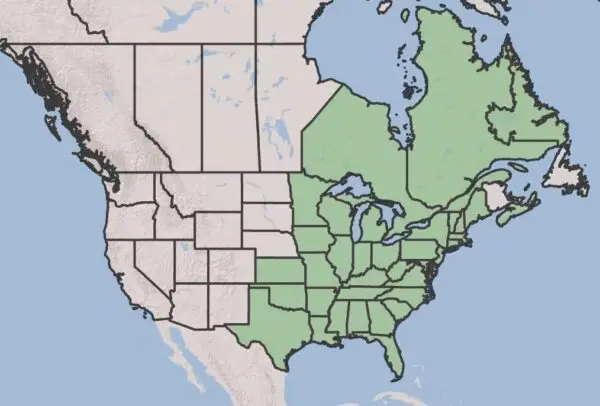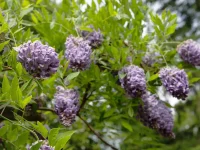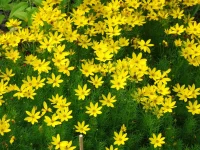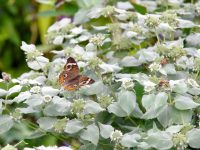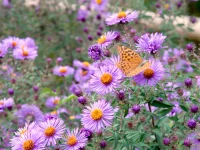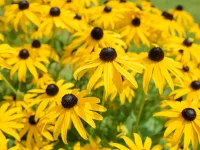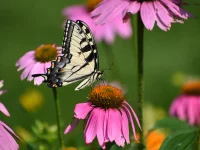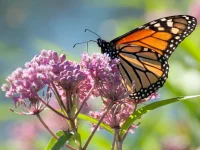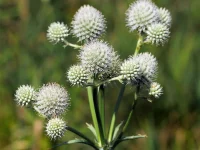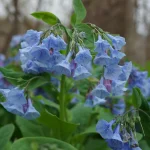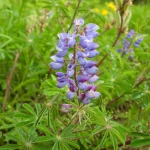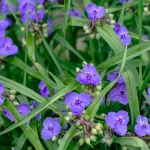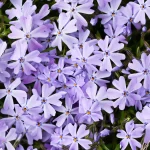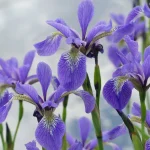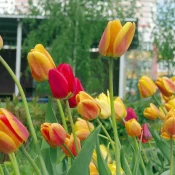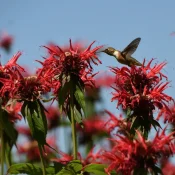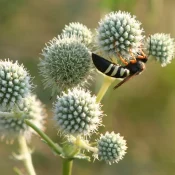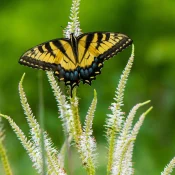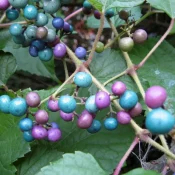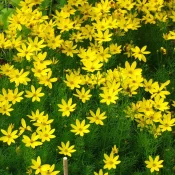Blue-Eyed Grass
Blue-eyed Grass is technically a native flower, although it looks very grass-like. Tiny blue-purple flowers balance at the very end of thin grass blades in the spring into summer. These plants are short—no more than 12 inches high—making it look like the lawn is blooming. Blue-eyed Grass likes sun to part sun and since it is a perennial, will come back year-after-year. They are perfect for borders, edges, and planters. Find tips and inspiration below.
- Full Sun, Part Sun
- Short (under 3')
- Early summer flowers, Spring flowers
- Semi-evergreen
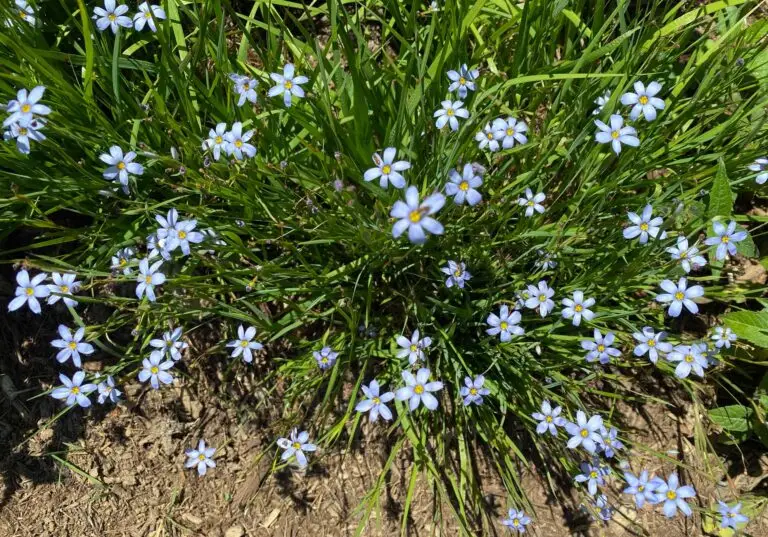
Blue-Eyed Grass (Sisyrinchium angustifolium) is a tiny and mighty native flower that blooms in the late spring and early summer. In this article, we’ll cover a few ideas for where to plant Blue-Eyed Grass, alongside ideas on where to find some for your garden.
First, let’s spend a moment on its shape and color. It shares a family tree with another plant:
Blue-Eyed Grass has a cousin: Iris
Look closely at the tiny blue flowers and their blade-shaped leaves, and you might be reminded of another flower: the iris. Iris flowers and Blue-Eyed Grass both belong to the plant family Iridaceae.
If you’re looking to plant other native flowers from this family, head over to our Beginner’s Guide to Native Irises to meet some cousins.
Where is Blue-Eyed Grass native?
Blue-eyed Grass is native to 60% of the United States and the eastern half of Canada. It’s amazing that the same plant species can thrive from Maine to Texas.
Where to plant Blue-Eyed Grass
Blue-eyed Grass is short: 4-12 inches tall on average. This makes it perfect for borders, containers, and walkways. The more you plant, the better it looks!
Full sun = more flowers
It likes a range of sun, from full sun to partial sun. One note on planting in part-sun areas: you’ll get the most blooms when Blue-Eyed Grass is in full sun.
Blue-Eyed Grass is often evergreen
This is a surprising bonus for this plant: even in snowy Northeast settings, many Blue-Eyed Grass will remain green and upright. (This might remind you again of its cousin—irises are also upright and green, even in the winter.) Blue-Eyed Grass will fill out with new greenery in the spring, right before the flowers bloom.
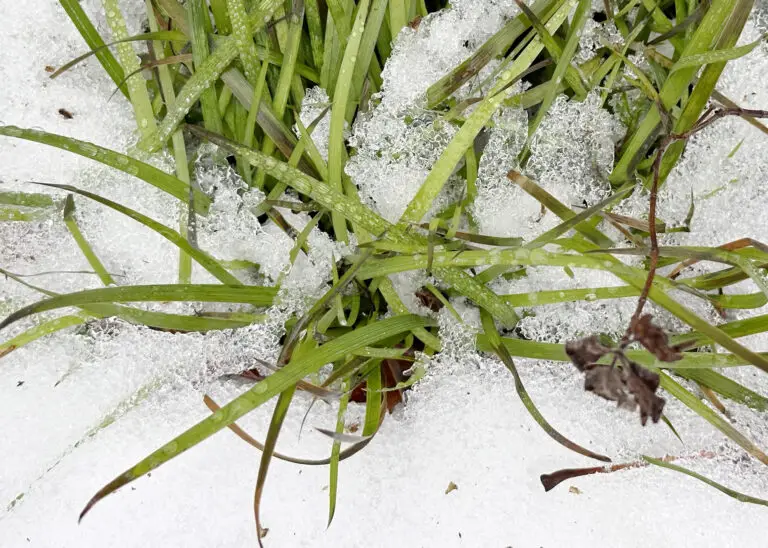
Challenges when planting Blue-Eyed Grass
While Blue-Eyed Grass offers numerous advantages, there are a few challenges caring for this perennial. One common challenge is its preference for well-drained soil. Blue-Eyed Grass can struggle in heavy clay soils. To ensure success, add some compost when you plant and ensure it’s not planted in a wet area.
The good news about this well-drained need is that Blue-Eyed Grass works great in planters or raised beds. You can see below how the landscaping crew at the Audubon Aquarium in New Orleans is using this native grass in their outdoor raised beds (its planted in the corner of the triangle.) This area takes blasting full sun and Blue-Eyed Grass is perfect for the space.
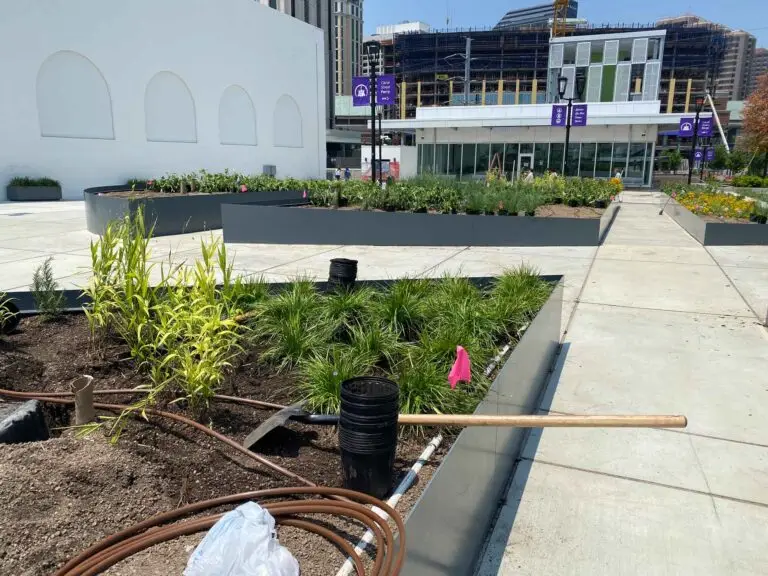
Where can I find or buy Blue-Eyed Grass?
Looking to source some Blue-Eyed Grass for your yard? We’ll be honest: finding a specific native plant—like Blue-Eyed Grass—can be challenging, especially when looking at conventional nurseries. Most conventional nurseries stock non-natives or only common natives like Black-Eyed Susan and Coneflowers.
Limit the disappointment by trying these four ideas for sourcing Blue-Eyed Grass:
Where can I find seeds and plants?
Finding native plants can be challenging (we partly blame Marie Antoinette.) To make it easier, we’ve assembled four sourcing ideas.
Native Nursery List
300+ native nurseries makes finding one a breeze
Online Native Plant Sellers
We've included 100+ online resources to help
Society Plant Sales
Every state has a native plant society; find yours
Online Communities
Local Facebook groups are a great plant source
What to plant with Blue-Eyed Grass
Since this native plant is so short, put it in front of taller flowers that also like well-drained areas like Bee Balm, Coneflower, Milkweed, and Rattlesnake Master.
And that wraps up our love letter to Blue-Eyed Grass! With its enchanting flowers and low-maintenance nature, this native perennial is a fantastic choice. While it prefers well-drained soil, the rewards are well worth the minimal effort. Don’t hesitate to plant this joyful perennial and watch as your garden is filled with pollinators. Blue-Eyed Grass is a perfect native plant for edges and borders. And if you love semi-evergreen, blue-flowered plants, stop by our Beginner’s Guide to Native Irises. Happy planting!
Sources
- Johnson, Lorraine and Colla, Sheila. A Northerner’s Guide to Native Plants and Pollinators. (2023), 79.
- USDA Plants Database, Blue-Eyed Grass
- University of Wisconsin-Madison Horticulture, Blue-eyed grass, Sisyrinchium
- NC State Extension, Sisyrinchium angustifolium
Blue is a rare color in nature! Here are some other options.
